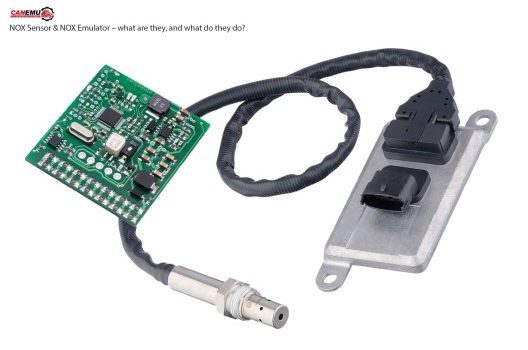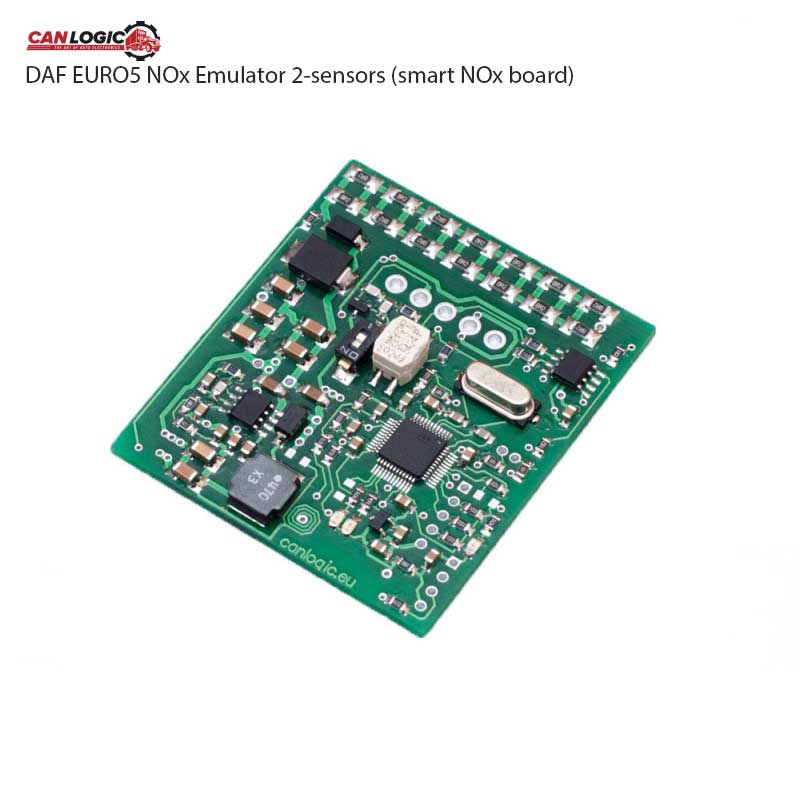NOx – a nitrogen oxide sensor is a high-temperature device/sensor built/designed to detect nitrogen oxides in combustion environments such as an automotive or truck exhaust emissions.
The development of exhaust gas NOx sensors started in the 1990s. The most recent area of NOx sensor application are SCR systems for light and heavy duty diesel engines. To satisfy various OBD requirements, SCR systems typically use a NOx sensor downstream of the SCR catalyst. If excessive NOx or ammonia concentrations exist at the SCR outlet, an OBD malfunction/fault will be triggered, as NOx sensors are sensitive to both gases. Should such fault/error be detected, vehicle ECU will start limp mode timer, and, after a certain number of hours, starts etc.. (different from one manufacturer to other) the vehicle will enter limp mode.
Vehicles can also be fitted with two nox sensors. This is mostly common with Euro 4/5 standard vehicles. Depending on the SCR system, another NOx sensor may be installed in front of the SCR catalytic converter.
The drive to develop a NOx sensor comes from environmental factors. NOx gases can cause various problems such as smog or acid rain. Some governments around the world have passed laws to limit their emissions.
With all these complicated nox and scr systems comes many problems. Nox sensors are especially likely to fail on a regular basis. And the worst news is that Nox sensors are not cheap to replace. If we take a look at some prices, genuine DAF nox sensor will each cost you around £500, Nox sensor for Mercedes will set you back £600, and Volvo owners will need to fork out £550 to replace thei faulty nox sensor. So nox sensors are not cheap, not by a long way.. What alternatives are there, if any? Well, there is one – to replace faulty nox sensor with nox emulator.
Nox emulator is an electronic circuit board or PCB (printed circuit board) – the exact copy of the circuit board installed within the metal box of the nox sensor. This is the brain of the nox sensor which receives and send various communications to other systems such as SCR system or vehicle’s main ECU. To replace the electronic board, you should first open the box to access it. The cover is simply sealed in to place, we would recommend using hand held heath gun to gently apply heat and soften the sealant till cover could be easily taken off. Once opened, remove electronic board gently paying especial attention to not damaging the pins over which it slots in. Next, slot nox emulator/pcb into the box over the pins and solder pins in place. You should now clean the box and the cover getting rid of any old sealant and making sure all areas are clean and ready for new sealant. Seal the cover in place using good quality purpose designed sealant preventing any risk of water/moisture getting inside this box as it would cause damage to the electronic board. Allow sealant to dry properly and re-fit your nox sensor.
Nox emulator will only disconnect and emulate nox sensor(s) on the vehicle, Adblue/SCR system will stay as it was and will continue to perform and consume adblue fluid normally. Nox emulator can be fitted to a vehicle with functioning or already failed nox sensors. Fitting Nox emulator will not bring any warning lights up on the dashboard and no future nox sensor failures will be possible, as the sensors will be disconnected. Installing nox emulator should not have any major changes to vehicle’s emmisions as adblue liquid will still be used.
At the moment, we are able to offer Nox emulators for most Euro 5 standard trucks/heavy goods vehicles. Our trade customers could also be supplied with a programmer to be able to program the emulators themselves.
Can Smart Nox emulator has proven to be a success in the short time we have been producing it and we are already developing nox emulators for Euro 6 vehicles.


